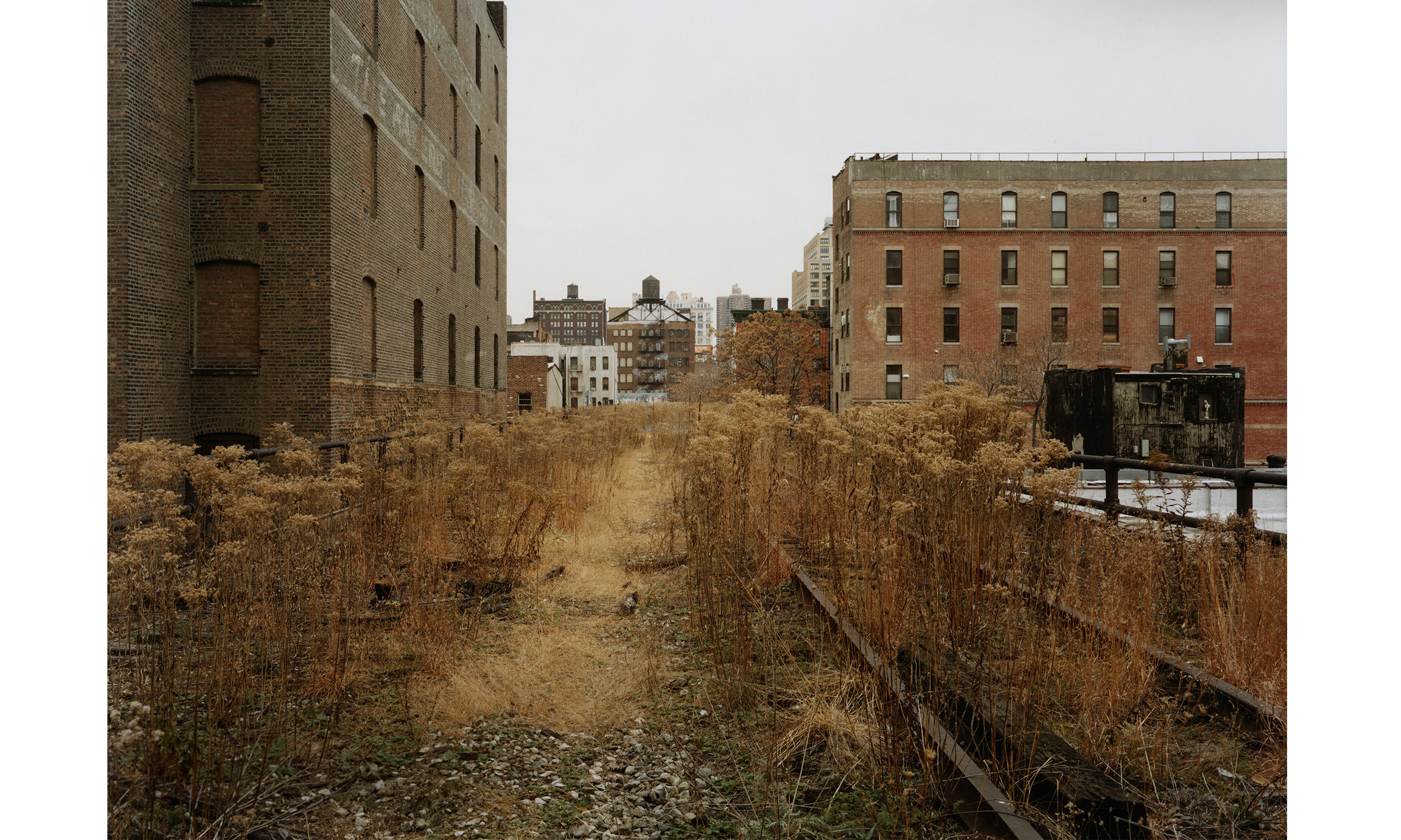
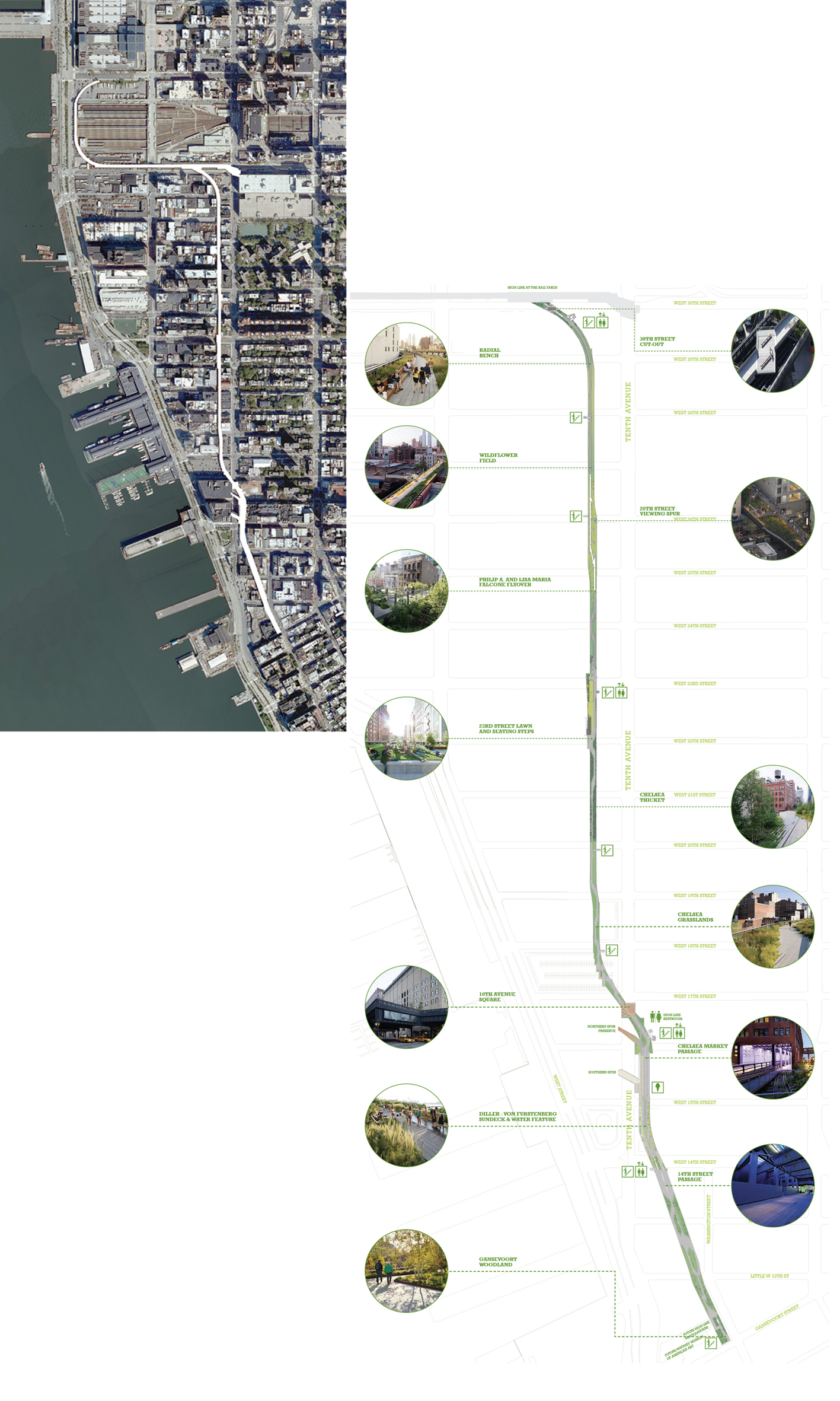
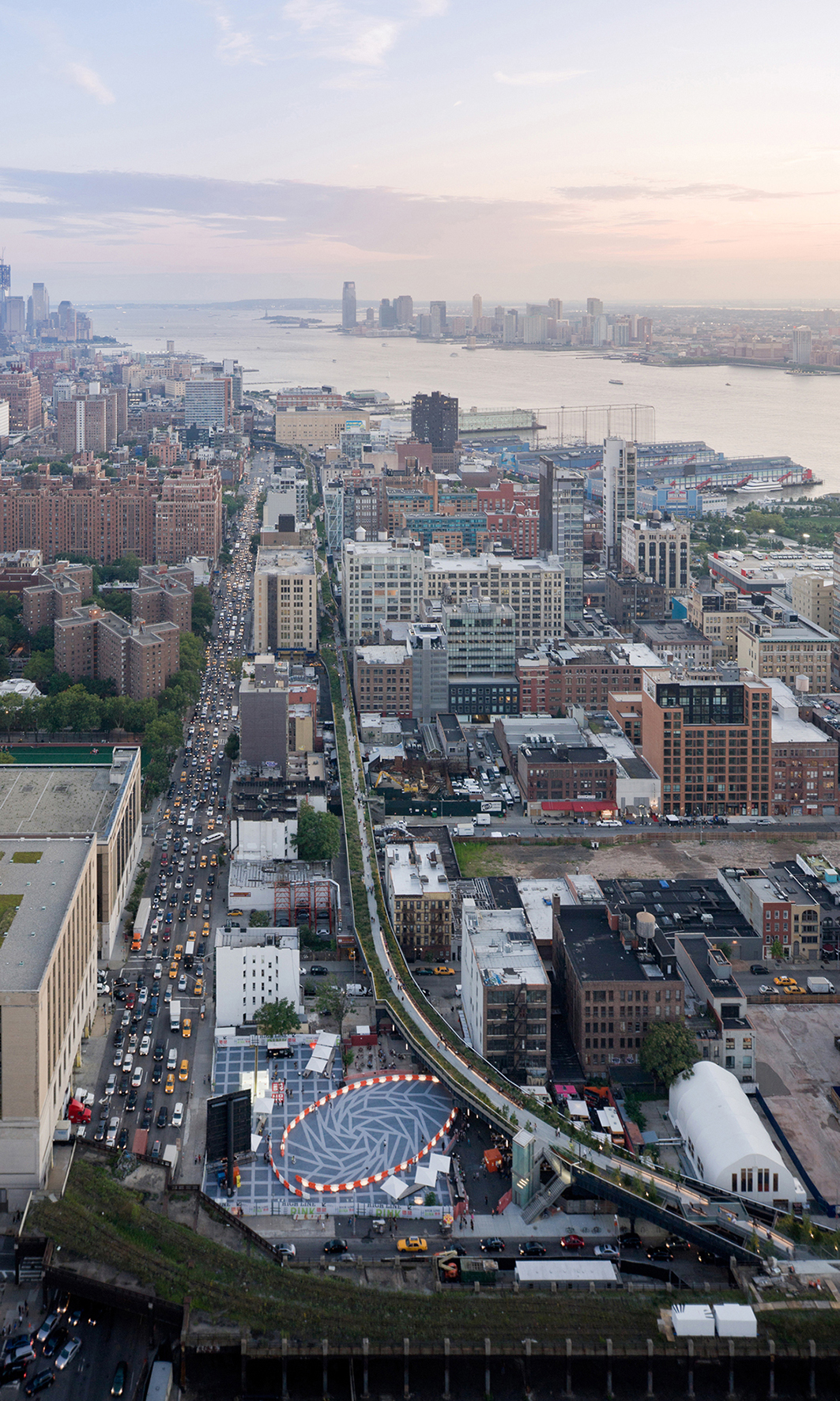
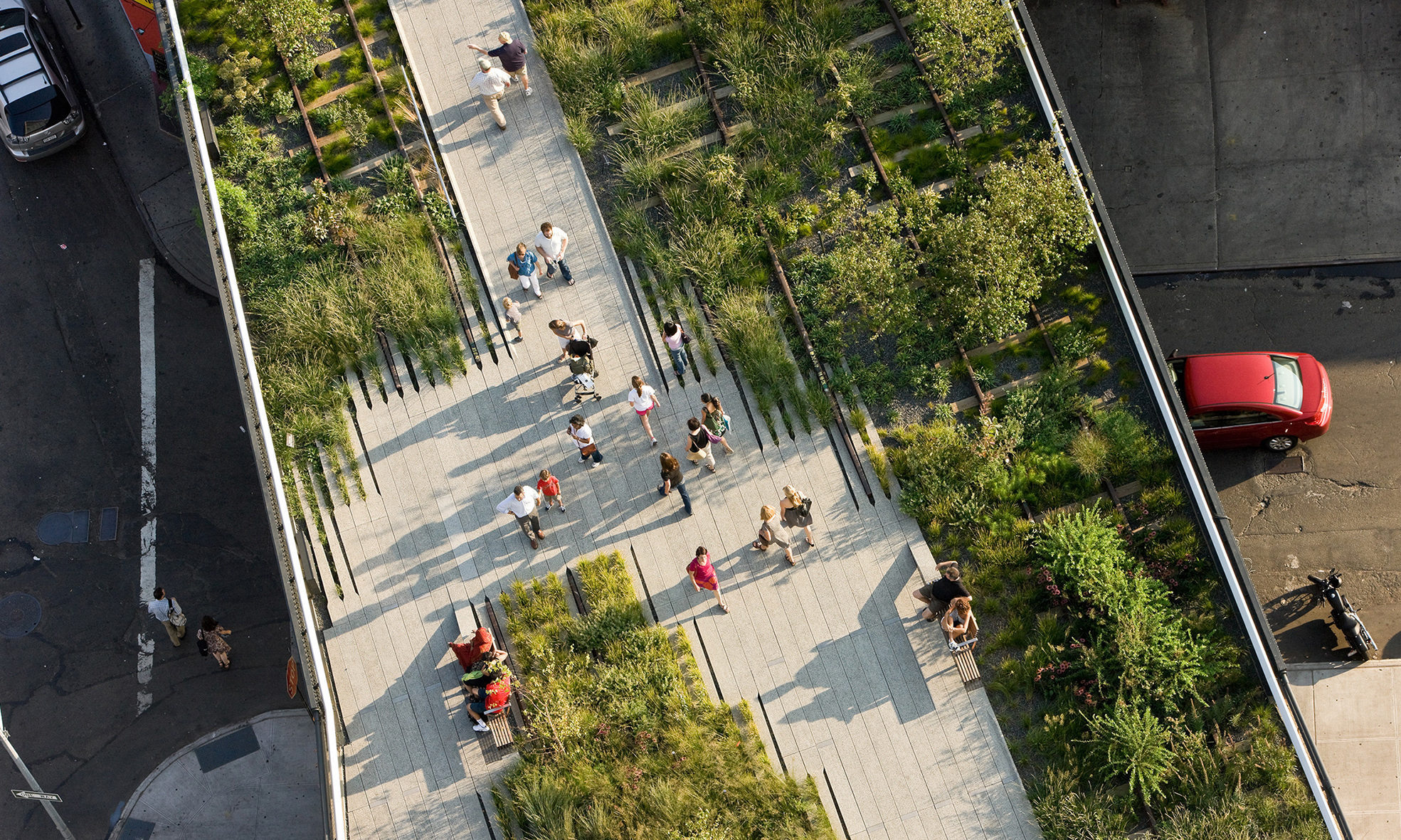
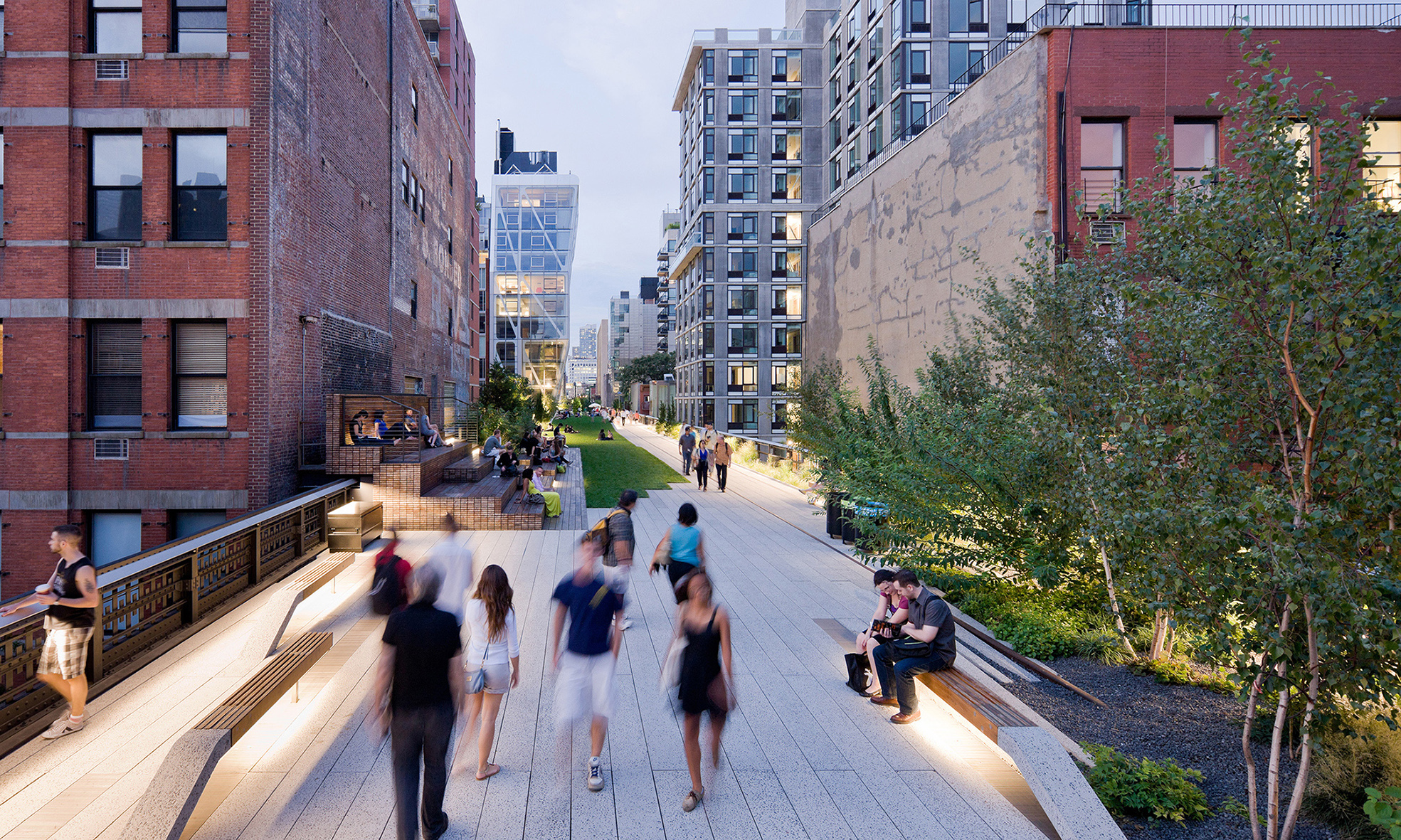
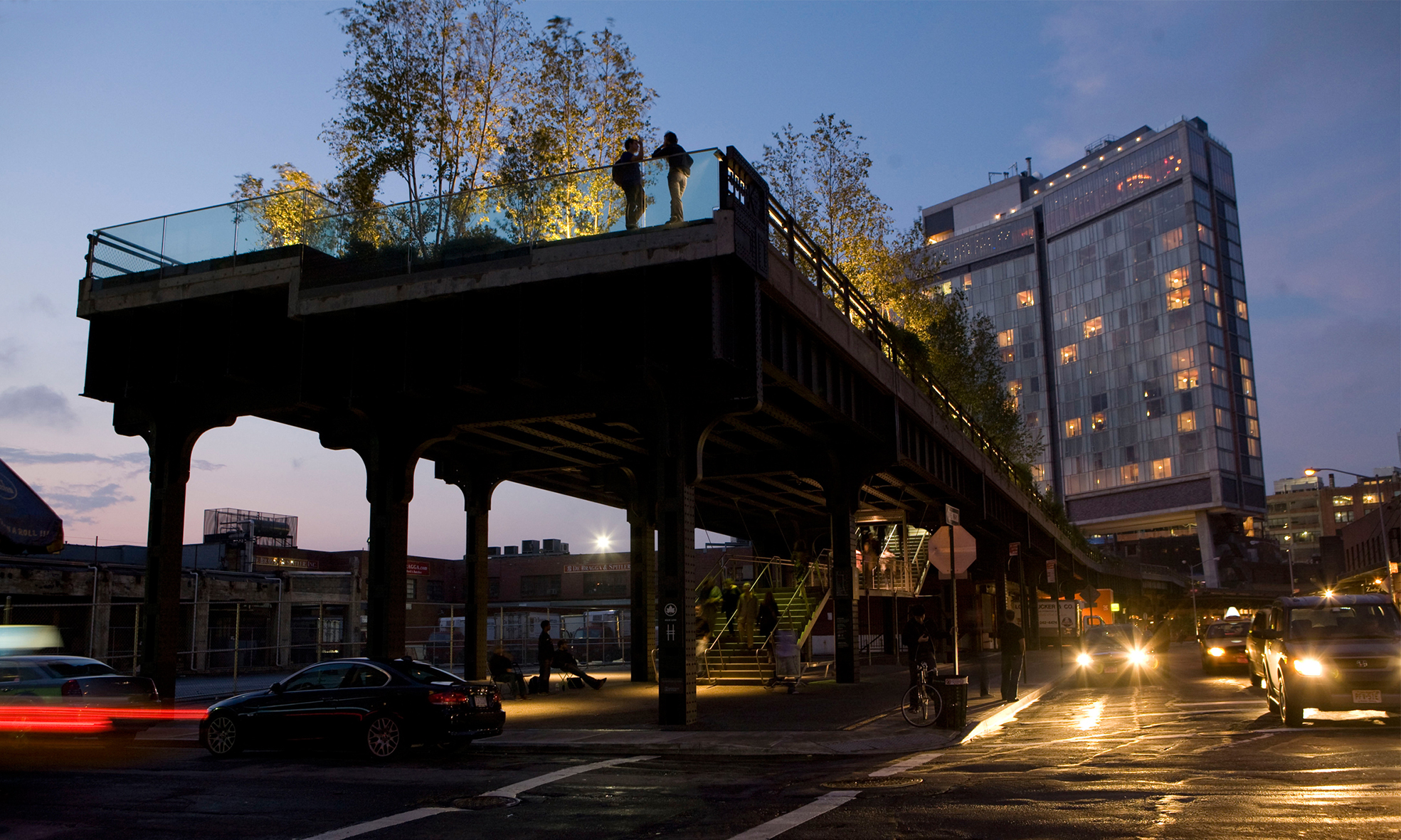
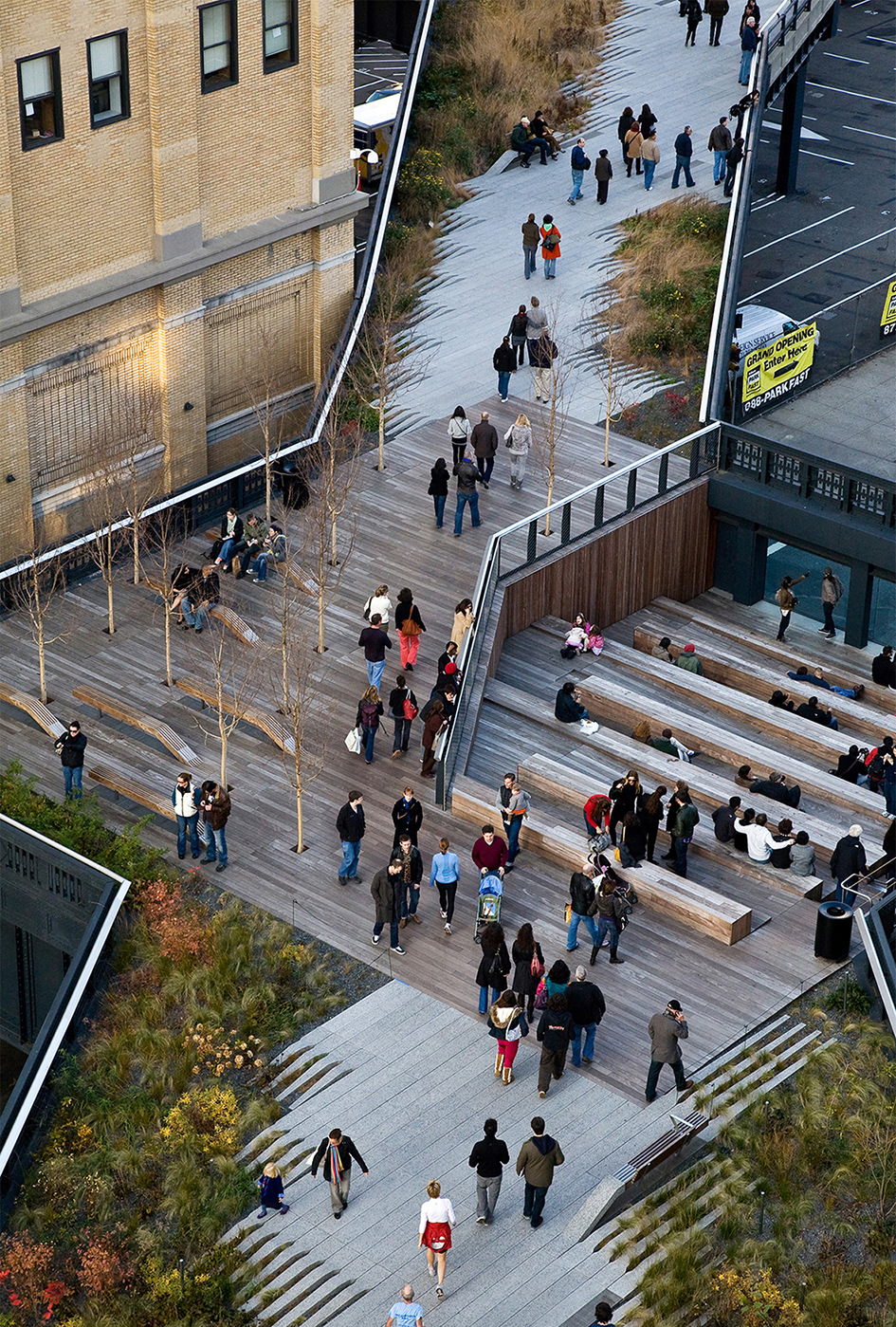
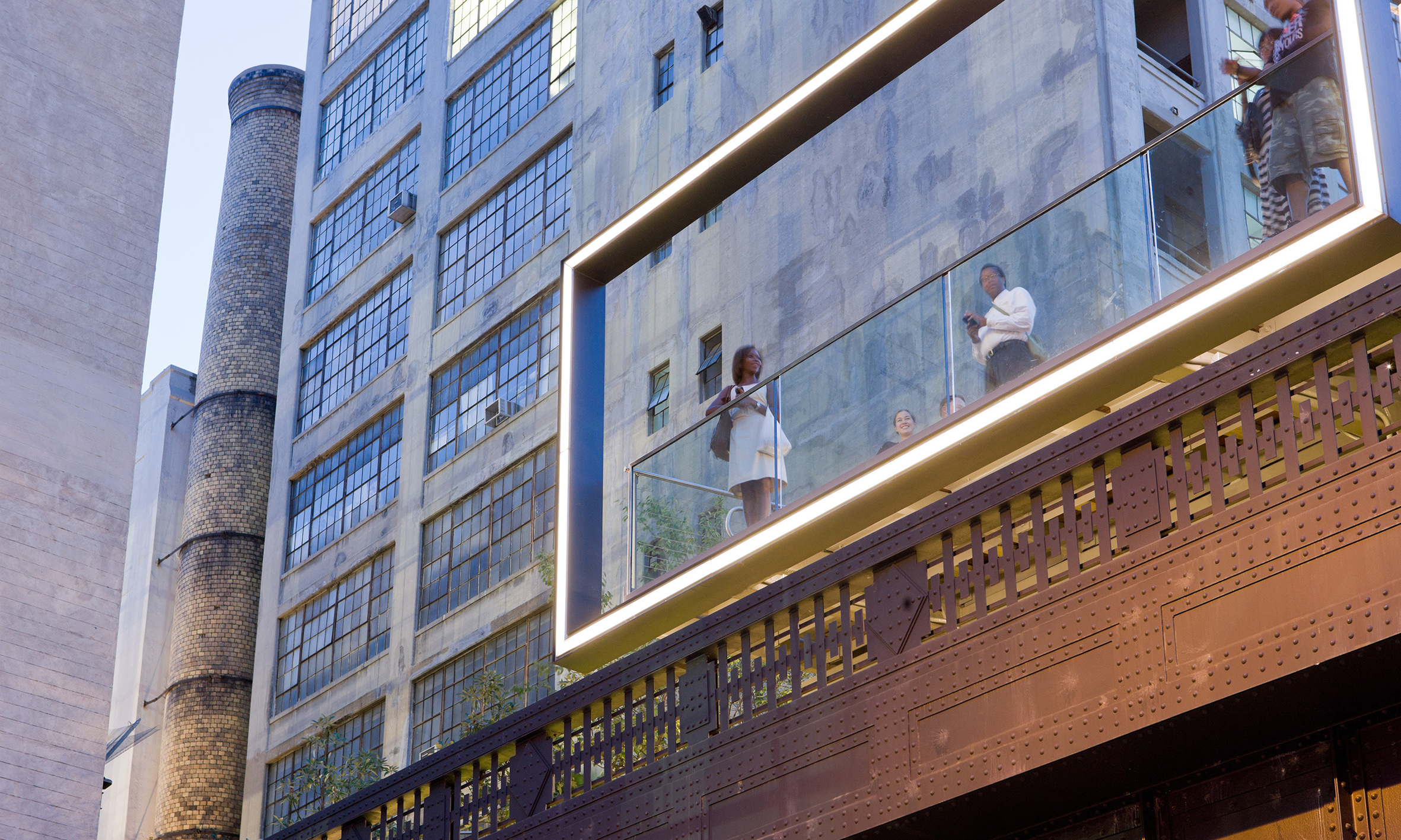
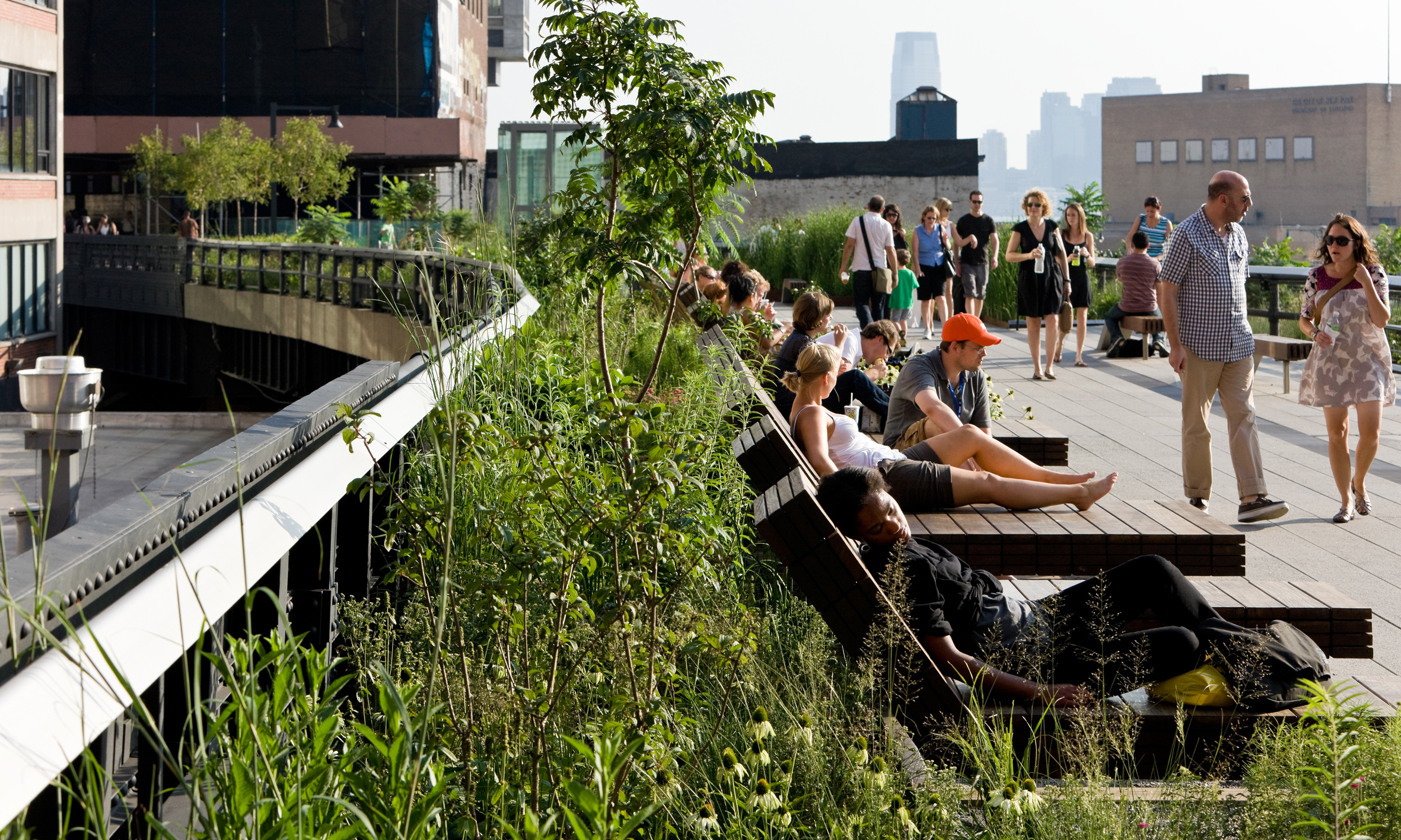
The High Line, New York, New York
Context:
Elevated 30 feet above the ground, the High Line is an elevated railroad reclaimed as an extraordinary public space that spans over twenty-three city blocks on Manhattan’s West side, connecting and interacting with 3 distinctive neighborhoods: the Meatpacking District, West Chelsea, and Hell’s Kitchen/Hudson Yards. It was built in the 1930’s as part of the West Side Improvement Project to lift freight traffic in the air, removing dangerous trains from the streets below. Left unused since 1980, the line was considered an eyesore in the neighborhood and was under threat of demolition. During that time an opportunistic landscape began to grow, capturing the imagination of a few New Yorkers and triggering the idea for its conversion into a park. In 1999, the Friends of the High Line formed with the mission to save the High Line and transform it into an extraordinary public park. The High Line Park is now built, owned by the City of New York, and maintained and operated by Friends of the High Line. In ten short years what was seen as a liability is now a reality, embraced as an icon and defining feature in New York City.
Design Intent:
Our position has always been to respect the innate character of the High Line itself; to capitalize on what is already there and to "grow" something new out of something old. The intent was not to overdesign the park with elaborate interventions, but rather intensify the existing context and design it as an immersive experience, episodic walk and surreal journey in the City. The High Line’s relationship to the City is what makes it so powerful and unique. It is a consistent line through a varied city landscape. The mix of building types and how they meet the High Line, along with the intimate choreography of the pathways directed towards views of the river, neighborhood and iconic city monuments is an authentic New York experience and part of what makes it so appealing. In contrast to being envisioned primarily as an ‘escape’ from the City, the High Line design uses the City for inspiration and exchange. The High Line’s past as a working railroad and abandoned landscape inspired the design, reflected through the use of industrial materials; the selection and arrangement of grasses and perennials to further define a wild and dynamic landscape; the integration of original railroad artifacts; and the exposure of the existing structure at features and access points. When observed in the context of the park, these features allow for a fresh interpretation of the site.
Truly Sustainable:
The High Line is a precedent urban park that transforms 1.5 miles of infrastructure into parkland as a new model for the ‘greening’ of the urban environment. As an ambitious urban reclamation project, the High Line’s very essence is born out of the desire to preserve and recycle with a holistic approach to sustainably. Politically as a testament to community activism, saved by two neighborhood residents; Ecologically as a 6-acre green roof in the middle of the city; Historically as a retrofit project, transforming an abandoned rail line into a new public space; Socially as both a neighborhood and world-class park, where tourists and the community come together; and Economically as an entrepreneurial effort that has demonstrated the ability of public spaces to attract businesses and stimulate local economic growth.
Recognized as an icon for innovative and sustainable design, the High Line reduces the heat island effect and creates significant habitat including over 300 plant species. Green-roof technologies and open-jointed pavement enhance water retention, drainage and aeration and minimize irrigation requirements. Recycled materials are promoted including reclaimed wood, recycled steel and local aggregate for precast concrete. The park uses energy-efficient LED lighting, promotes local and sustainably grown food and hosts a variety of free and low-cost community programs.
Impact and Inspiration:
Recognized as a significant contributor in the revitalization of Manhattan’s West Side, the High Line has become a defining feature in its neighborhood, a powerful catalyst for investment and a much-loved destination. The combination of the 2005 City rezoning and the success of the park have helped to create one of the fastest growing and most vibrant neighborhoods in NYC. Since 2006, new building permits around the High Line doubled and at least 29 major development projects have been initiated accounting for more than $2 billion in private investment. The High Line is visited and loved by millions of people each year who use and make the park their own. Total visitation has exceeded expectation with 4,454,217 visitors in 2012, making the High Line the second largest attraction in New York City, just behind the Metropolitan Museum of Art, with greater visitation than the Statue of Liberty and the Museum of Modern Art.
The High Line is widely recognized as a huge success and points to the real value in creating dramatically new and fresh public spaces in the City. In this project, preservation and innovation come together through the adaptive reuse of the existing structure as a new, compelling, one-of-a kind recreational amenity and public promenade. The design of the park is iconic and specific to its place. This authenticity has generated a loyal group of supporters and devoted fans and has inspired other cities to consider the reuse and reclamation of their own underutilized infrastructure.

| Tipologia | Parcs urbans i metropolitans |
| Promotor | Friends of The High Line and the City of New York |
| Promoció | Privada |
| Localització | New York, New York, Estats Units d'Amèrica |
| Àrea | 20000 m² |
| Cost | 6884,70 €/m² |
| Any inici | 2011 |
| Any finalització | 2014 |